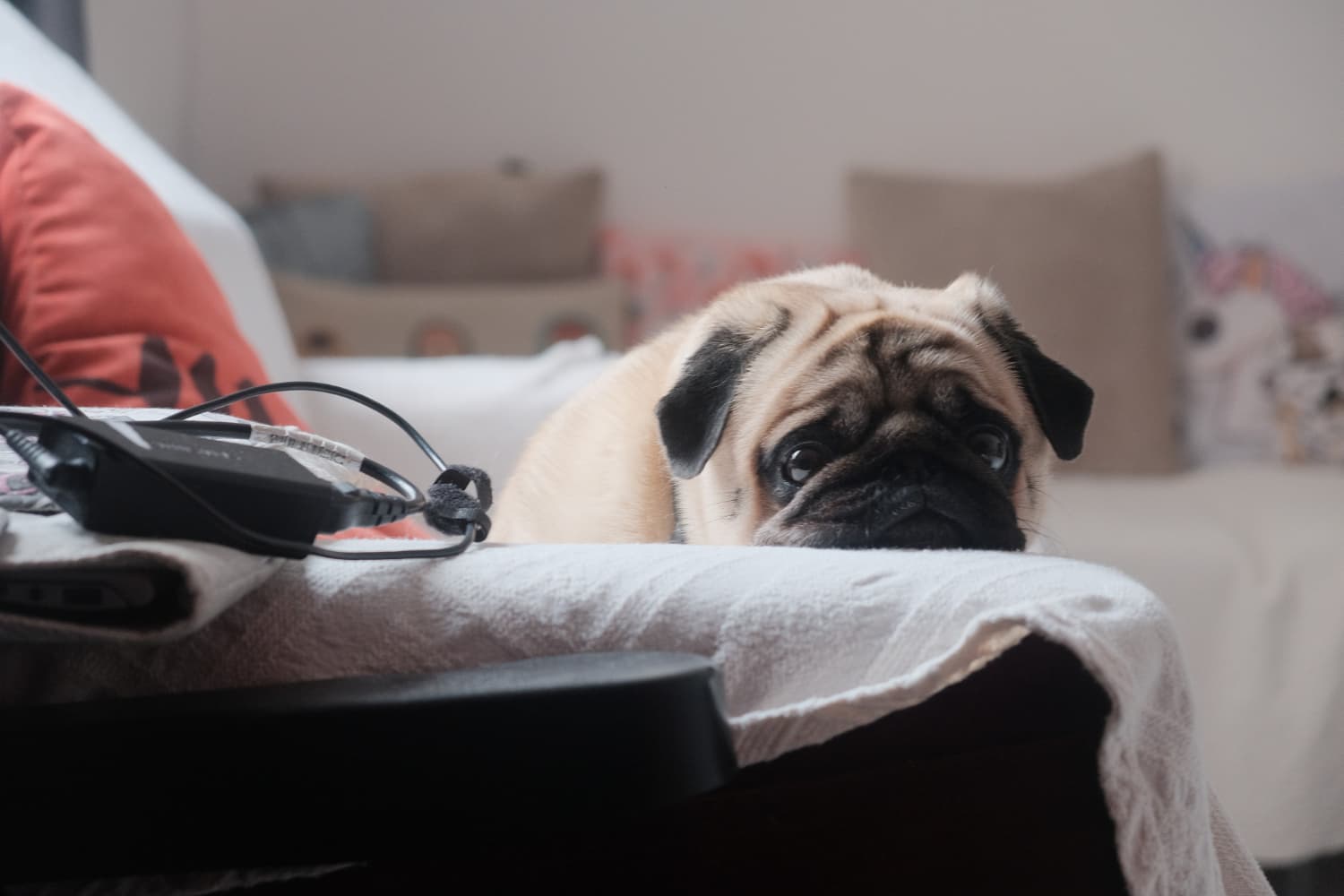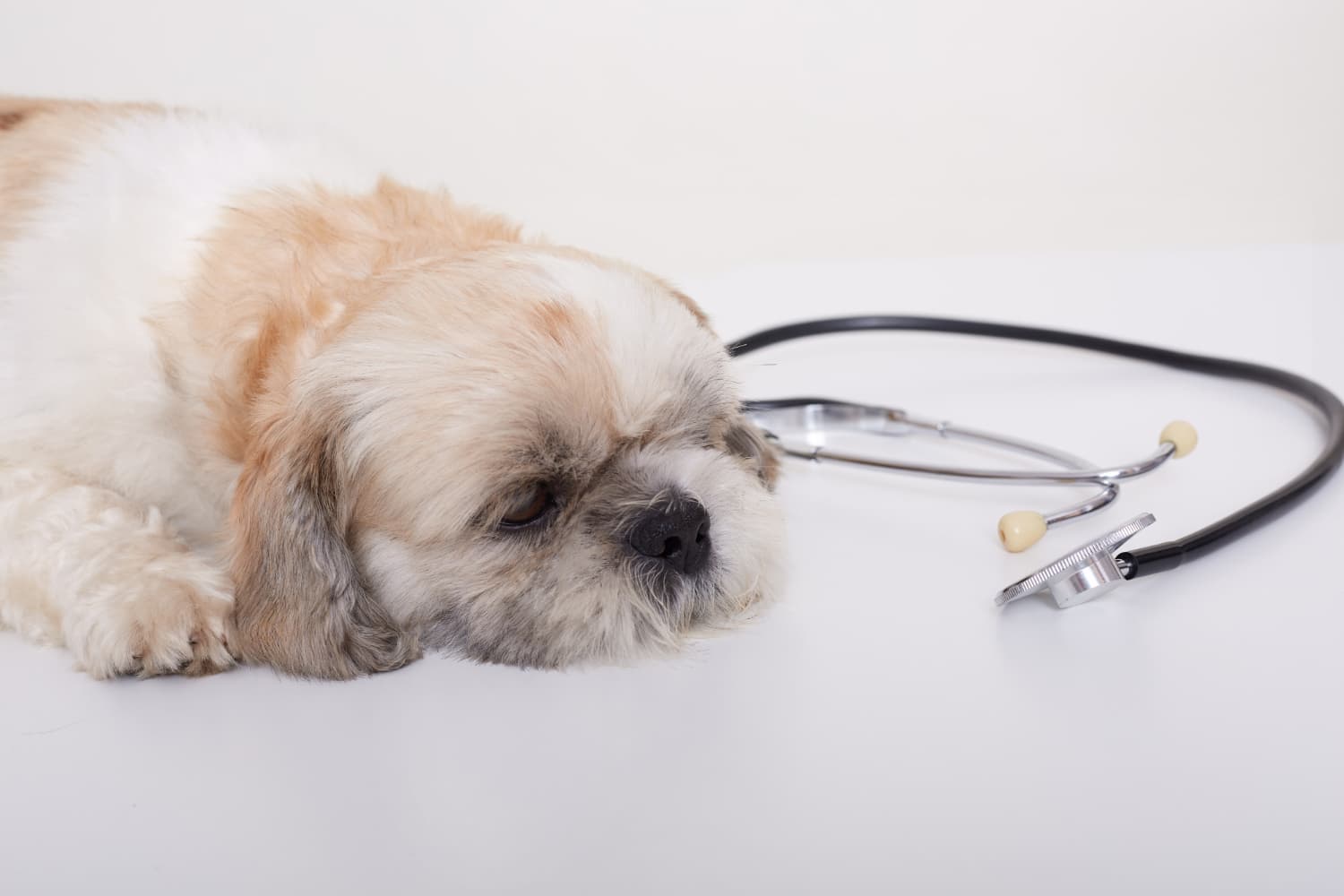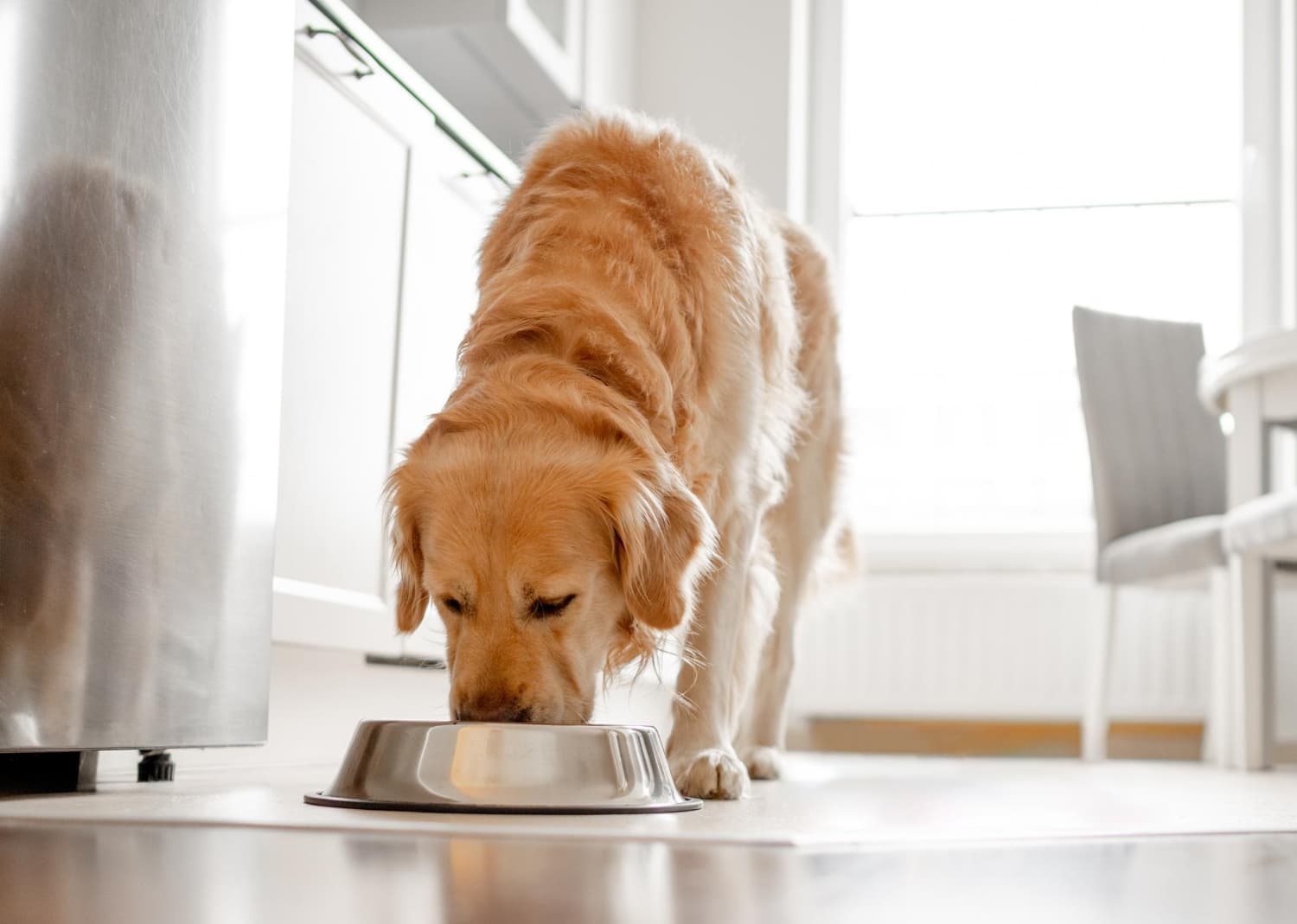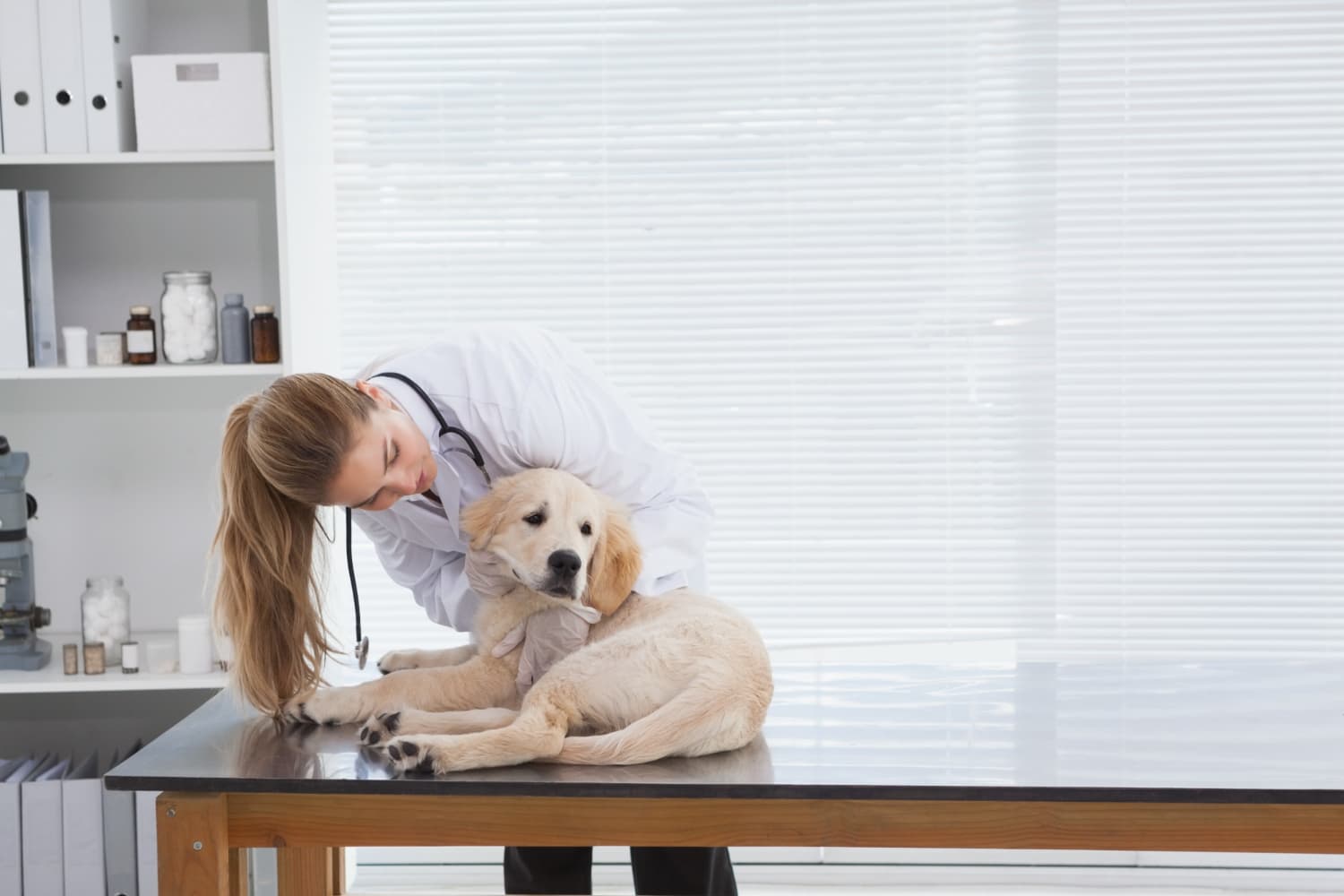Gastric Torsion in Dogs: Causes and Recovery Tips

By Evelyn Harcourt
mai 01, 2025 - 1 min read
Gastric torsion, also referred to as GDV (Gastric Dilatation and Volvulus), is a life-threatening emergency that can develop rapidly, often within just a few hours. The symptoms can be dramatic, as dogs experience significant pain and quickly go into shock.
Recognising the early signs of this condition and acting rapidly can be the difference between life and death for your dog. Those who own a high-risk breed, such as a Great Dane or Saint Bernard, should be particularly aware of what to watch for.
This article explores the risk factors, treatment and preventative measures you can take to reduce the risk of gastric torsion.

What is Gastric Torsion?
Gastric torsion occurs when a dog's stomach fills with gas, fluid, and food and then twists on its axis so the contents cannot leave.
Gas continues to build up, putting pressure on the surrounding organs and blood vessels. If untreated, the blood supply is cut off, and the dog can pass away from shock.
Some dogs' stomachs bloat but do not twist. This is a condition called gastric dilatation. Those prone to episodes of dilatation are much more likely to experience a GDV at some point in their lives.
Causes of Gastric Torsion in Dogs
Although the exact cause is still a little hazy, we do know that certain risk factors make a dog more likely to develop a GDV. It is a combination of genetics, body conformation, and lifestyle.
Some of the recognised risk factors include:
- Having a deep and narrow chest (seen in the Great Dane, Standard Poodle, German Shepherd, for example)
- Exercising vigorously after eating a large meal
- Advancing age and weakened muscles
- Having a relative who has experienced a GDV
- Stress or anxiety
- Gulping air while eating (aerophagia), which is usually linked to rapid eating

Signs and Symptoms of Gastric Torsion
As an owner, you should become familiar with the potential signs of a gastric torsion. Recognising them early lets you get your dog to the vet on time. This may mean seeing a 24 hour or emergency vet, if it is during the night or weekend.
Distended or Bloated Abdomen
The most obvious sign of this condition is a markedly bloated abdomen, which swells up like a big balloon and is rock hard. The abdomen can enlarge within a very short time, just a few hours, as the stomach fills with air.
Unproductive Retching
The dog feels the need to burp and vomit, but cannot. As they try, they will cough, gag and retch. This can be distressing to watch, and almost looks like the dog is choking.
Excessive drooling and panting
The dog will feel nauseous, and as they struggle to swallow, they will also drool copiously.
Due to the associated pain and distress, you will also notice your pet panting rapidly. As their circulatory system struggles to cope, this panting can become more intense. The more they pant, the more air they take in, further exacerbating their symptoms.
Diagnosis of Gastric Torsion
Your vet will likely be suspicious of the diagnosis as soon as you tell them your dog’s breed and symptoms. They should palpate the abdomen and can check for a high-pitched ‘Ping!’ sound when they flick over the stomach area and listen with their stethoscope.
A quick abdominal X-ray can be performed to check for gas buildup and the typical ‘double bubble’, which indicates a twist in the stomach.
Treatment for Gastric Torsion
The treatment must be administered rapidly to save the patient’s life. The dog will initially be stabilised with fluids to address the hypovolaemic shock and any salt imbalances.
At the same time, the vet should try to decompress the stomach by inserting a trocar (a sharp instrument that pierces the skin and enters the stomach, releasing air).
When the dog is stable enough to be put under anaesthesia, the procedure to derotate the stomach will be performed. The entire gastrointestinal tract should be examined after this, as any part with its blood supply cut off could be necrotic (dead), necessitating its removal.
Some vets then perform a gastropexy, a procedure to anchor the stomach down, in the hopes of preventing a recurrence of the GDV in the future.
Very sadly, if the treatment for GDV is not affordable, canine euthanasia may be advised to prevent further suffering. This is because once the stomach has rotated, it will not twist back without surgery, and the dog would inevitably pass away.
How to Prevent Gastric Torsion
Not every case of GDV can be prevented, but several things can be helpful.
Feeding Recommendations
Over the years, the feeding recommendations have changed. We now know that it is better to feed from the ground, rather than from a height.
Owners should consider splitting meals throughout the day, rather than giving just one large meal.
Wet food may be preferable to dry food, which can swell in the stomach when mixed with fluids.
Slowing Down Rapid Eaters
Eating too rapidly is associated with aerophagia (air eating). Slow feeding bowls or puzzle feeders can prevent this. If the dog guzzles its food greedily, owners can also consider offering the meal in portions every five to ten minutes.
Avoiding Vigorous Exercise Before and After Meals
Too much movement around meal times can mean the stomach moves about more than it should. Once you add the extra weight of a meal, it is more likely that the stomach will twist on its axis.
Limiting Stress
If a dog is anxious, they will generally swallow more air as they pant. This is akin to humans who mouth breathe when nervous.
It is not always easy to reduce stress but it can be helpful to avoid any known triggers such as loud noises, spending too much time alone, or long car journeys.
Breeding Practices
As it is recognised that this condition can be genetic, it is sensible to neuter any dog who has experienced a GDV and not to allow them to breed.
Discuss With Your Veterinarian about Prophylactic Gastropexy
If you own a high-risk breed or your dog has a family history of GDV, you and your vet should consider a gastropexy at the same time as neutering. If not neutering the dog, it is typically performed between six and twelve months of age.
A gastropexy is a relatively straightforward surgical procedure that tacks the stomach to the abdominal wall, limiting its movement. It should last for the dog’s lifetime and is a procedure that most veterinary surgeons are familiar with and happy to perform.

Recovery and Aftercare for Gastric Torsion
If your dog has been in the hospital for a GDV, it will take a few weeks for it to recover. Your vet should send you home with discharge instructions with specific recommendations on what to feed, which medication to give, and when to reintroduce exercise.
Monitoring for Recurrence
If a gastropexy has been performed, the chance of recurrence falls to about 5%. When not performed, the recurrence rate is as high as 80%.
Should the GDV recur, you will see the same signs you saw with the initial episode; bloating, panting, drooling, and distress.
Adhering to Dietary and Exercise Guidelines
After the surgery, it will be more important than ever to stick to the preventative guidelines. This includes splitting meals into two or more portions a day, feeding from the ground, using slow-feeding bowls, and not exercising around the time of a meal.
It is sensible not to allow your dog to drink a large amount directly after eating a meal. As with their food, you can use a slow-feeder bowl for their water. Consider giving slow and frequent water refills, rather than always leaving the dish filled to the top.
Studies on the best food type (dry vs wet) have been largely inconclusive to date, with variable results. There is some evidence that supplementing kibble with table scraps and wet food can help lower the incidence.
Follow-Up Veterinary Check-ups
Directly after surgery, your vet will likely want to see your dog on days three and ten post-op. This will be to ensure the surgical wound is healing well and to check for any complications, such as an infection or fluid buildup.
Going forward, your dog will need to be seen as regularly as other dogs; about yearly for young and middle-aged dogs, and twice yearly for seniors who are in good health.
Learn More About Gastric Torsion
Please contact us if you have any further questions about gastric torsion, want to discuss your dog’s risks, or book a gastropexy.
We are here to help. If you’re concerned your dog is currently showing signs of gastric torsion, do not wait; call us immediately.
Continue reading

Signs a Cat is in Pain and How to Recognise Them
Learn how to recognise pain in your cat and the subtle signs to look out for.
Read article
What to Do If Your Dog Eats Chocolate?
Learn what to do if your dog eats chocolate and the signs of toxicity to look out for.
Read article
Signs of Hypothermia in a Dog and How to Treat It
Learn the signs of dog hypothermia and how to treat it quickly and safely.
Read article